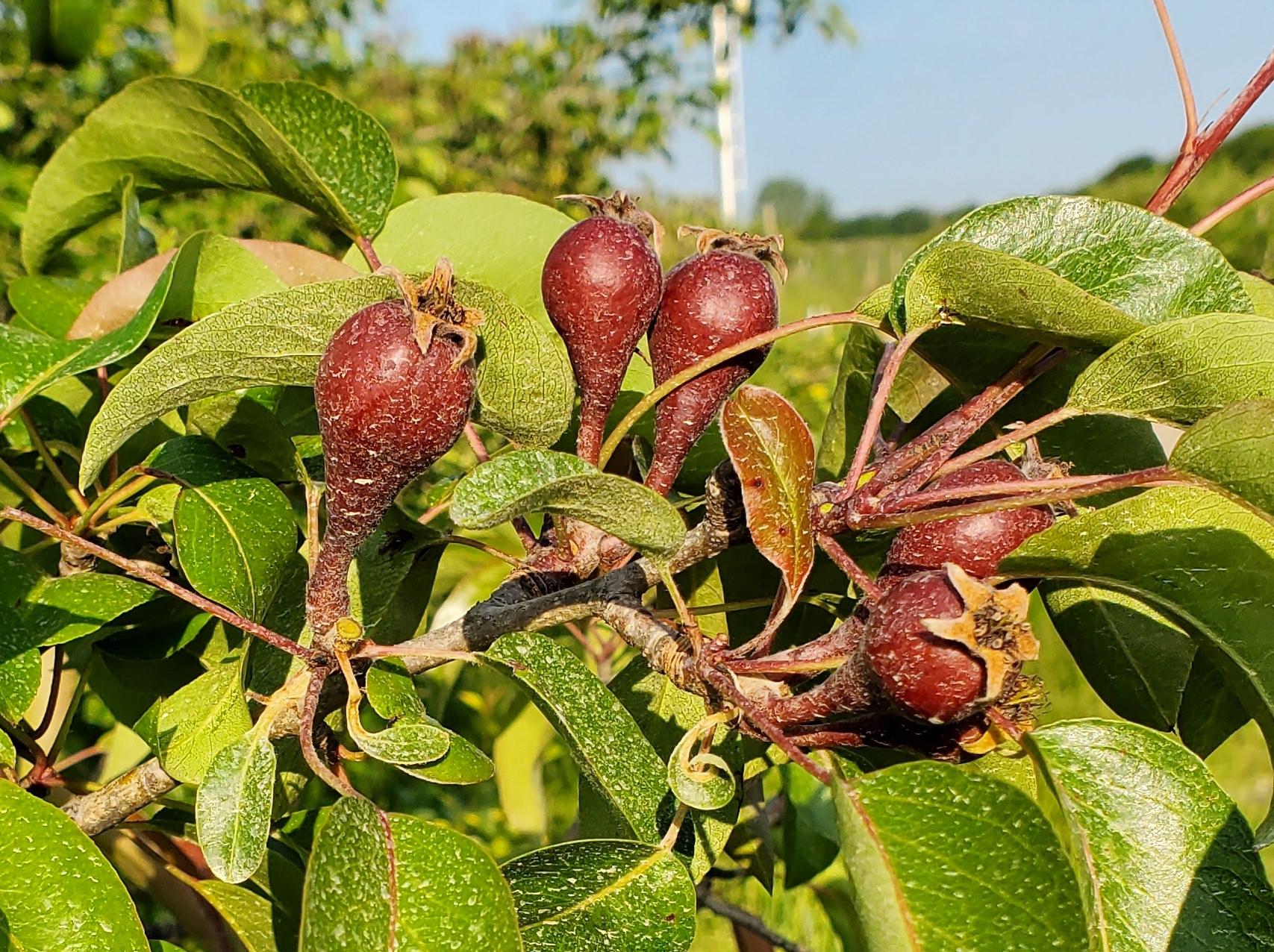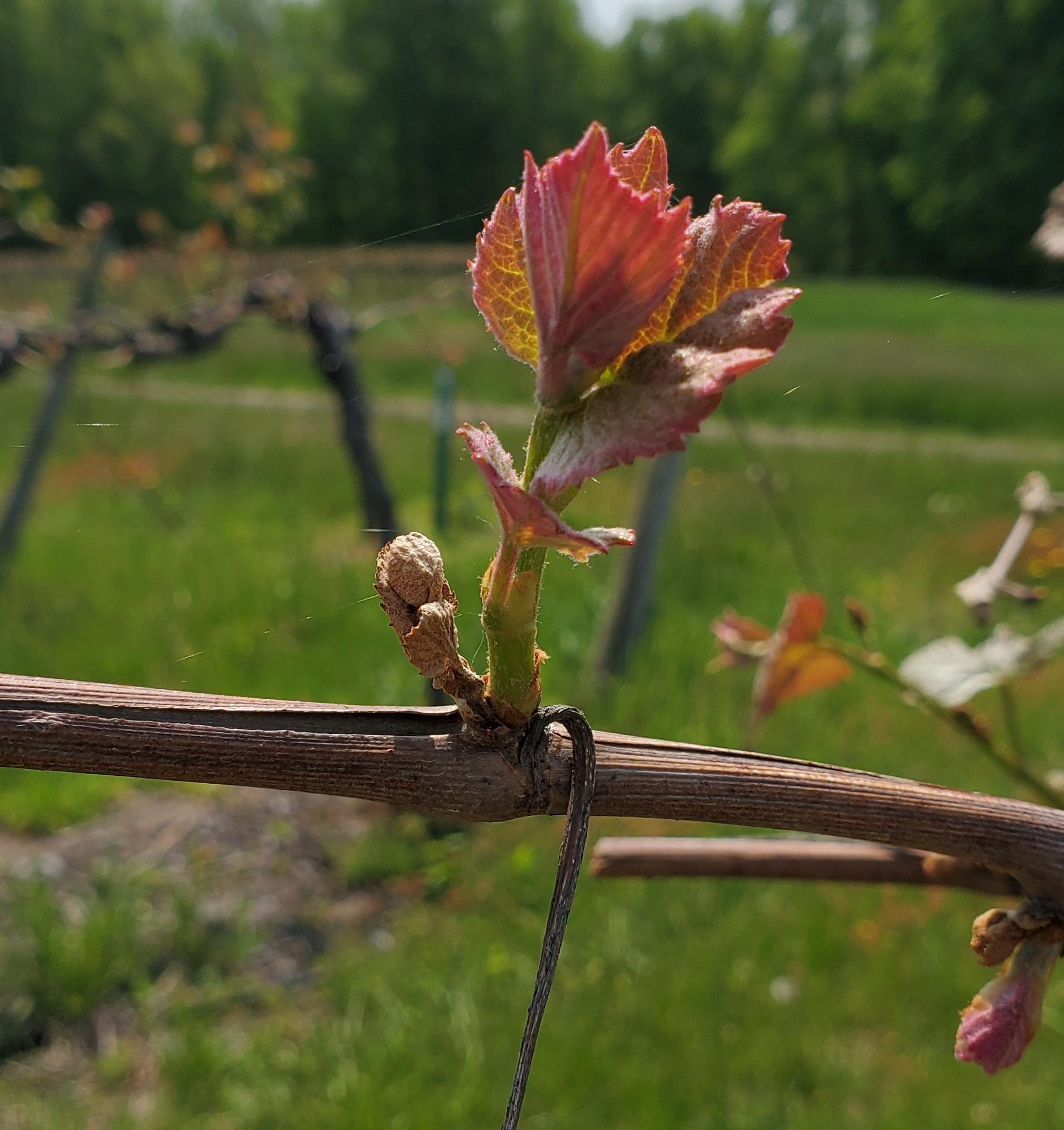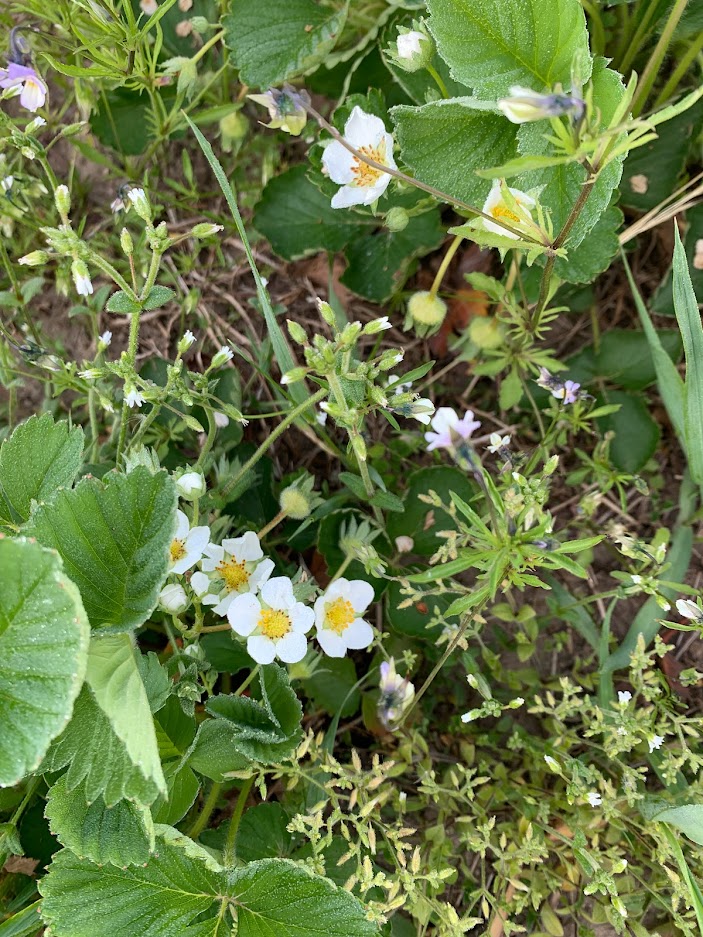Southwest Michigan fruit update – May 23, 2023
Plum curculio damage is being seen. Oriental fruit moth and codling moth flight is underway. Grape berry moth biofix is expected soon.

Weather
The region saw seasonal weather last week. Most days saw high temperatures in the upper 60s to low 70s. Much of Michigan experienced low temperatures on Thursday morning, May 18, below freezing, but the southwest region rarely saw low temperatures below 40 degrees Fahrenheit. The coldest temperature recorded was 37 F.
A cold front passed through the area late on Friday, bringing some rain and cool daytime temperatures on Saturday. Rain amounts were less than a tenth to a third of an inch for the region, but the slow drying conditions created disease infection events for some locations.
We collected fewer than average number of growing degree days (GDD) last week, 104 GDD base 42 and 57 GDD base 50, respectively. We have been drier than average for several weeks. Soils are drying out.
|
Southwest Michigan GDD summary from March 1 – May 22, 2023 |
|||
|---|---|---|---|
|
Station |
GDD 42 F |
GDD 45 F |
GDD 50 F |
|
Benton Harbor (SWMREC) |
662 |
533 |
364 |
|
Lawton (Lawton) |
656 |
526 |
358 |
|
Fennville (TNRC) |
566 |
446 |
295 |
|
Average for the SW region |
640 |
512 |
348 |
|
Average last week |
536 |
428 |
291 |
The next week will be a little warmer. Expect sunny days and high temperatures near 70 for most days. No rain is expected in the next week. With the lack of rain, expect soils to continue drying out. Growers with irrigation should be doing maintenance to prepare for needed use if the dry conditions continue.
Tree fruit
Warmer conditions are increasing pest activity. Recent dry weather is putting stress on recently planted trees. Oriental fruit moth catch is continuing. Egglaying and hatch is expected now. Tarnished plant bug and plum curculio damage on tree fruit have increased markedly over the past week. Catch of San Jose scale males are continuing for the second week.
Peach and nectarine crop loads in the area are becoming apparent. Some varieties have two distinct fruit sizes with the smaller fruit perhaps yet to drop. Fruit set in some sites is greater in treetops and higher elevations due to freeze damage. Crop loads are still generally good in the area. Tarnished plant bug and plum curculio damage to fruit is showing up. Oriental fruit moth biofix is approximately May 5–7, later than normal due to cool temperatures. Eggs of this pest are likely hatching now.
Bacterial spot symptoms are becoming more apparent on leaves. Oxytetracycline is used for bacterial spot treatment when fruit emerge from the shuck to reduce potential phytotoxic effects of copper. In orchards that had peach scab problems last year, cover sprays for peach scab run from petal fall to third cover. The dry weather has been favorable for rusty spot (powdery mildew). Fungicide coverage for this disease is needed from shuck split to pit hardening for susceptible varieties.

Cherry fruit are big enough to see while driving past orchards making it easier to assess crop loads in the area. Pits are hard in sweet cherries and are becoming noticeably firmer in tarts. Cherry leaf spot is the primary disease concern now. Plum curculio damage to fruit is showing up.
In plum, fruit loads are light, depending on the site and variety. Disease coverage concerns are both black knot and to a lesser extent, brown rot. Like other stone fruit, plum curculio damage to fruit started showing up over the past week.
Apple fruit range from 10 mm to over 17 mm in diameter, depending on the variety and location. The Cornell apple carbohydrate model is available in the apple section on the Michigan State University Enviroweather website to help timing thinning sprays. Scab symptoms are now showing up. Disease management concerns now are scab, powdery mildew, rust and fire blight. We are generally past bloom on apples with reduced risk from fire blight. Newly planted trees and some hard cider varieties continue to have new bloom that are at risk. Low rates of Apogee and Actigard help to reduce the risk of shoot blight. Tiny fruit tree leaf roller larvae are webbing and feeding on leaves. Rosy apple aphids are present on some varieties. Biofix for codling moth is approximately May 18 for the area.
Pear (Bartlett) fruit range around 15 mm diameter at the Southwest Michigan Research and Extension Center in Berrien County. Pear rust mite puckering of leaves has been seen in several locations. Scab and pear psylla management are the major concerns.
Small fruit
Grapes shoot lengthening continues on vinifera varieties. Clusters are separating and expanding on juice and hybrid varieties.
Secondary shoots are beginning to lengthen on juice grapes at locations that had primary bud loss from the 27 April freeze. Growers with damage are still predicting 80-90% crop. No wine grape damage has been reported.
Wild grape bloom is expected soon. Some locations on the lakeshore already started wild grape bloom in the last couple days. Bloom near vineyards should begin this week. Wild grape bloom is used as a biofix for grape berry moth. Scout for wild grape bloom on your farm. Biofix is when 50% of clusters are at 50% bloom. See this article for more information: Using the MSU Enviroweather grape berry moth model in 2018.
The disease focus at this time is on phomopsis, black rot, anthracnose and powdery mildew. With the mild winter, expect high levels of surviving inoculum on shoots, dried clusters and canes. Generally wet conditions are necessary for disease development. Powdery mildew is the exception. It prefers humid conditions with no rain and average temperatures in the 60s and 70s. Conditions this week are conducive for powdery mildew development.

Blueberry bloom continues. Some varieties are at petal fall in more advanced locations. The window for application of copper, Sulforix or lime sulfur products to suppress early season diseases is closing. As leaves expand, mummy berry and phomopsis shoot strikes are the main disease focus. We found several mummy berry shoot strikes and other blights while scouting in the Bangor area.
Strawberry bloom is underway. Small fruit are beginning to show up in early blooming sites. Growers are starting to think about fruit rot sprays. If you are still hoping to spray for weeds, make sure and check the pre-harvest interval (PHI) when selecting an herbicide. We are getting to the part of spring where some herbicide PHIs are cutting it close to predicted harvest dates.

Brambles: Bloom has begun in summer bearing raspberries in southern Berrien County. Other locations should see bloom begin this week.
Hops: Stringing is complete. Bines are training up the string. They are up to 3-4 feet tall at some locations.
Announcements
Our regular southwest Monday fruit IPM updates are once again a hybrid format. The meetings are held in-person with virtual attending also available online. Our first meeting was Monday, April 10, at 5:30 p.m. and will continue through the rest of the season. You need to register to receive the Zoom link and password for these meetings. The webinars are free and one pesticide applicator credit is available for each meeting. The same Zoom link will be used with all the Monday meetings—you only need to register once.
This work is supported by the Crop Protection and Pest Management Program [grant no 2021-70006-35450] from the USDA National Institute of Food and Agriculture. Any opinions, findings, conclusions, or recommendations expressed in this publication are those of the author(s) and do not necessarily reflect the view of the U.S. Department of Agriculture.



 Print
Print Email
Email


